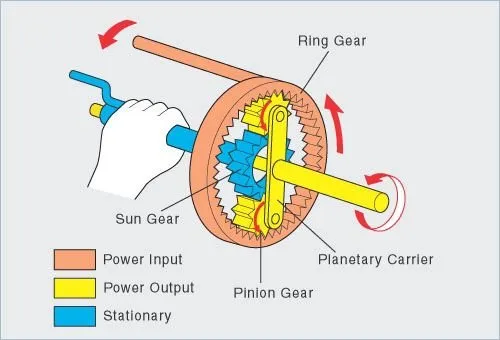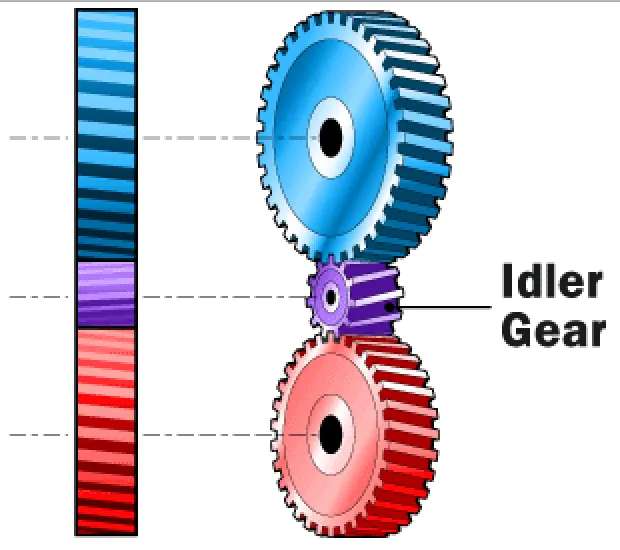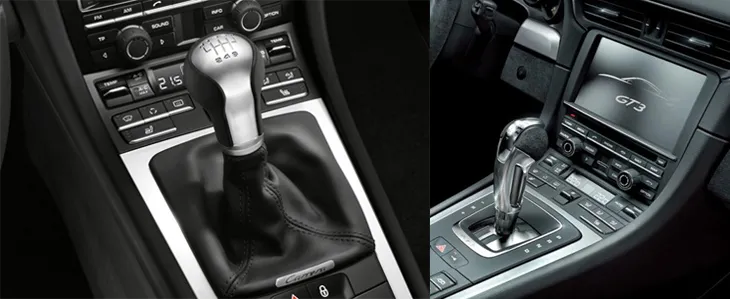Introduction to Manual VS Automatic Transmission
When I was a kid, I would always wonder how the machinery is set differently between manual and automatic transmission. Recently, I had my nephew asking me the same question and thought my fellow Porsche and chica lovers might have the same intellectual thirst regarding the topic. So, here we go :)
This post will cover
- Automatic Structure
- How Automatic Works
- Manual Structure
- How Manual Works

To begin with, let's start with how automatic transmission looks like. As you know, a vehicle with automatic transmission has no clutch or gear shift. The computer does the gear shift for you. In a such setting, gears are labeled quite differently from that of manual; sun gear, planet (pinion) gear, ring gear, and carrier. The carrier either fixes or allow planet gear to move around the sun. When planet gear is fixed, it just rotates in its position.

Depending on what gear is chosen as input, you have 4 speed automatic; 1, 2, D, R.
For example, let's take a look at how reverse situation works. In this case input gear is the sun and planet is rotating in its position, hence turning the ring gear in the same direction.

The sun gear rotates in the same direction as your engine, say clockwise. Then planet gear that is in contact but stationary, rotates in its position turning counter clockwise. Therefore, ring gear in contact with planet rotates counter clockwise as well, opposite direction to the input rotation. It's easy as that!
Moving on to manual, as you know you have clutch and gear shift.
Clutch is what connects engine and transmission. When released the input shaft is disengaged from the flywheel that is directly connect to the engine, therefore, no more torque exerted on the shaft.
There are input shaft, counter(lay) shaft, output shaft, 1st~fifth gear, and a reverse gear.

Gears are loosely connected to the output shaft. And when you make a gear shift with your stick, the collar engages to the gear you select, fully connecting output shaft with the gear.
For instance, when you shift to the second gear, collar moves to the second gear and locks the second gear and the output shaft. The same goes for other gears as well except for the reverse gear.

For reverse gear, you have another component in play, the idler gear. Idler gear is pushed in so that it's in contact with the input gear. There's no collar involved and in order for the idle gear to be inserted and lock in between the input and output gear, all gears have to be at a complete stop.

Now, you've mastered the mechanism for both manual and automatic transmission. Pat yourself on the back! Manual transmission used to have better fuel efficiency. But now, as technology develops, not much of a difference. But still it's more fun than the latter, for automatic you just drive with mindlessly.
For those who are always intellectually hungry, you might want to delve in more to find out how clutch works, the connector between engine and transmission. Conversely, the torque converter, the counterpart of clutch in automatic transmission remains to be unanswered in this post. We'll cover this soon.
On to the next one.
One Line Summary
Automatic and manual transmission each have different set of components in play, but how the gear changes the direction and rotational speed of output shaft is indeed common for both.
